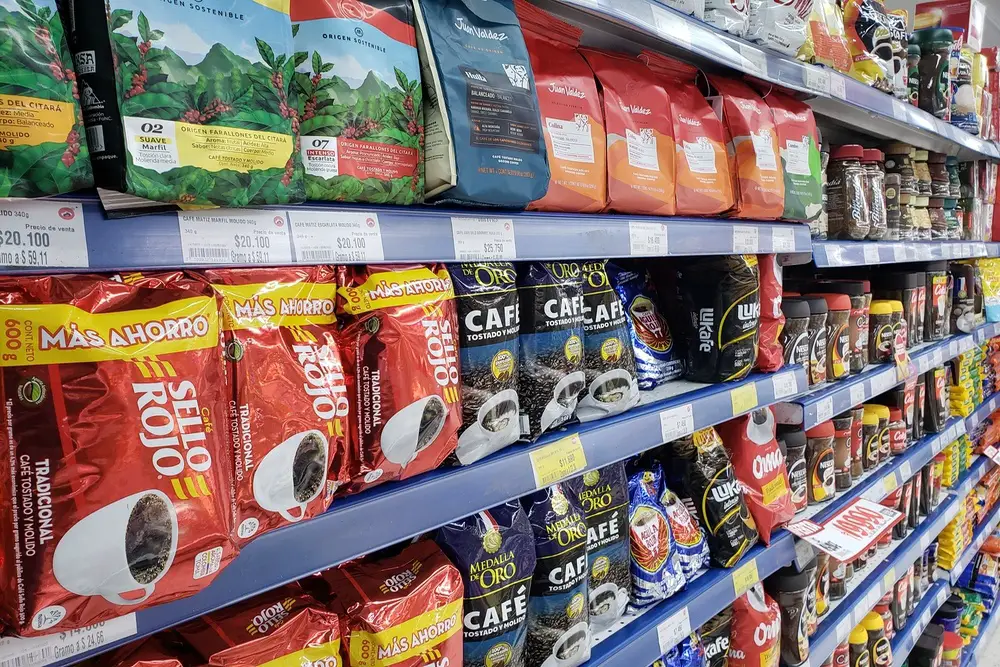Many of us experiment with coffee by using new filters, using different coffee pots or composting coffee waste. However, there are some innovative people who are taking the use of coffee much further.
A Colombian company called Woodpecker builds prefab homes from coffee husks, a by-product of coffee roasting. It turned out that this waste is a very good material for building houses.
Table of Contents
Killing two birds with one stone
In Colombia, there is a housing deficit of more than 65% in rural areas. Many families do not have adequate housing. Woodpecker found a way to turn one into the other, using a by-product commonly found in Colombia: coffee husks.
The Colombian company combines recycled plastic with discarded coffee shells to create sustainable building materials, two elements that would otherwise end up in landfills. The result is affordable, lightweight prefab homes that also reduce methane emissions from food waste. Home prices start at $4,500.
Coffee husks, the natural material that surrounds coffee beans and is released during roasting, are typically discarded as waste and dumped in heaps that emit methane, a potent greenhouse gas.
Story of Woodpecker
Woodpecker SAS was founded about 11 years ago as a sister company of Maeco SAS. Maeco is a construction company that was founded more than 37 years ago. The intention was to create a lightweight construction system. A system that can easily be used for homes and classrooms in rural and remote areas where traditional building systems do not work.
In addition, large-scale production keeps costs low. And they sell roofs, walls, classrooms, and other structures that can be assembled by anyone who knows how to follow the instructions.
The steel frames of the kits and the WPC panels are easy to assemble without any difficult-to-handle tools.
Coffee houses
This combination of coffee shells and plastic is called WPC. The building blocks are easy to assemble and offer an alternative building system that the company says is “100% eco-friendly”.
Why Use Coffee Husks to Build Sustainable Homes?
Woodpecker chose this material after testing different natural fibers such as rice and palm with different types of recycled plastic. Coffee pods are flame retardant (fire retardant), durable and even insect proof.
Studies show that coffee husks can not only be used as a building material, but also have great potential for biogas production. Coffee shells can also be composted.
The ecological advantages of WPC
For each house, Woodpecker uses about 3 tons of WPC material. Compared to wood, WPC is better because it does not burn. In addition, it does not splinter, is insect-proof and environmentally friendly.
However, WPC offers more than just an eco-friendly way to recycle materials in homes. A single house can be completed in a week. With combined forces, however, they can be erected even faster. This makes them ideal for quick construction in areas that need immediate housing.
Process of house building
To build the WPC houses, tools like saw, drill, tape measure, wrench, hammer, riveter and safety elements are used. In addition, the materials of the kits are metal profiles, brackets and screws, as well as the WPC profiles.
Installation can take 2 to 7 days and does not necessarily require skilled labor.
Soil analysis
The ground on which the installation is to be carried out must be firm and secure. The floor should be properly level and slope at least 1.5% to siphons or drainage points. This is to ensure that no water is trapped under the floor.
Excavation
The metal profiles that make up the structure of the house serve as the foundations. Once the ground is deemed suitable, 60cm square holes must be dug on each side in the location where they are to be installed.
Assembly of the structure
After the excavation, the vertical metal profiles are attached and the other parts that make up the “skeleton” of the house are assembled.
Installation of floors and walls
At this point the WPC is installed and the floors and walls are laid. The panels should slide easily between the metal profiles, which have a so-called “U” that acts as a guide to accommodate each piece of WPC. Finally, they must be fixed with the appropriate screws and rivets.
Doors and windows
The WPC kits contain a metal door for the main entrance and depending on the number of bathrooms in the house also doors. The windows are made of aluminum with 4mm glass, also variable depending on the type of house.
Guilds benefit from WPC houses
Guild of Coffee Producers
The Coffee Farmers Guild is a non-profit organization whose main goal is to improve the quality of life of around 553,000 coffee farmers and their families.
In this sense, WPC houses can provide additional income from the sale of coffee waste for further use. In addition, this type of housing can be an alternative for coffee farmers who do not yet have their own adequate housing.
Guild of Garbage Collectors
Garbage collectors can also participate in the WPC process, as this requires shredded plastic that can be supplied by garbage collectors.
Social housing
In some communities in Colombia, e.g. For example, in Málaga in Santander, WPC projects have been developed to help low-income people access home ownership, supported by grants and affordable government financing methods.
Coffee houses in times of need
In response to the severe damage Hurricane Iota inflicted on the islands of San Andres and Providencia in 2020, the Colombian government used Woodpecker designs to house those displaced by the disaster.
Despite the lack of electricity, damaged infrastructure and difficult construction conditions, the company’s lightweight construction system provided a quick and practical solution for the displaced.
The potential to help a region hard hit by a natural disaster is evident. Even in a place that requires affordable housing.
Eco-friendly living trends
In today’s world, sustainable concepts and eco-friendly facilities have become important elements of housing construction. Issues such as climate change and rising energy costs are important issues for many people.
Here are some eco-conscious trends that are gaining ground.
Use of the existing infrastructure
Declining demand for large office space creates potential opportunities for conversion to residential use. The buildings must undergo an inspection to ensure that they can be converted into apartments. Once approved, owners and developers can reuse the buildings instead of starting from scratch.
Utilizing existing infrastructure reduces waste and carbon consumption compared to sourcing new materials and construction.
Design for sustainability
Like the WPC initiative, many new residential buildings are being designed with sustainability in mind. Instead of using new materials and harming the environment, construction projects use materials such as recycled or reclaimed wood.
Another sustainable approach is to increase the size and number of windows in an apartment to maximize the use of natural light.
Smart devices
Popular eco-friendly products include LED light bulbs, motion sensors and dimmable lamps, as well as energy-efficient washing machines, dryers and dishwashers, all of which can help save energy and costs. Efficient sinks, toilets and showers also help to minimize water consumption.



